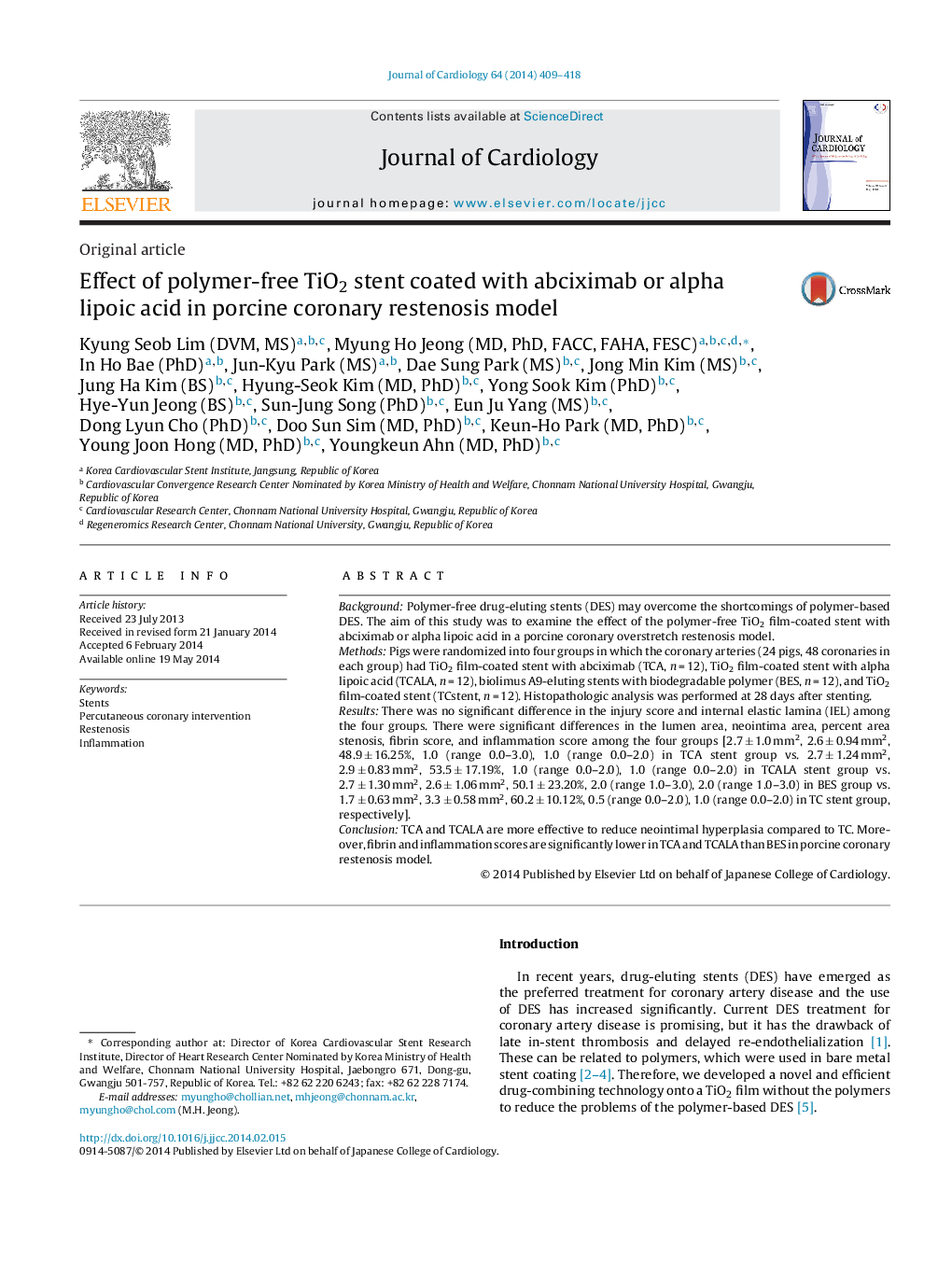| Article ID | Journal | Published Year | Pages | File Type |
|---|---|---|---|---|
| 2963015 | Journal of Cardiology | 2014 | 10 Pages |
BackgroundPolymer-free drug-eluting stents (DES) may overcome the shortcomings of polymer-based DES. The aim of this study was to examine the effect of the polymer-free TiO2 film-coated stent with abciximab or alpha lipoic acid in a porcine coronary overstretch restenosis model.MethodsPigs were randomized into four groups in which the coronary arteries (24 pigs, 48 coronaries in each group) had TiO2 film-coated stent with abciximab (TCA, n = 12), TiO2 film-coated stent with alpha lipoic acid (TCALA, n = 12), biolimus A9-eluting stents with biodegradable polymer (BES, n = 12), and TiO2 film-coated stent (TCstent, n = 12). Histopathologic analysis was performed at 28 days after stenting.ResultsThere was no significant difference in the injury score and internal elastic lamina (IEL) among the four groups. There were significant differences in the lumen area, neointima area, percent area stenosis, fibrin score, and inflammation score among the four groups [2.7 ± 1.0 mm2, 2.6 ± 0.94 mm2, 48.9 ± 16.25%, 1.0 (range 0.0–3.0), 1.0 (range 0.0–2.0) in TCA stent group vs. 2.7 ± 1.24 mm2, 2.9 ± 0.83 mm2, 53.5 ± 17.19%, 1.0 (range 0.0–2.0), 1.0 (range 0.0–2.0) in TCALA stent group vs. 2.7 ± 1.30 mm2, 2.6 ± 1.06 mm2, 50.1 ± 23.20%, 2.0 (range 1.0–3.0), 2.0 (range 1.0–3.0) in BES group vs. 1.7 ± 0.63 mm2, 3.3 ± 0.58 mm2, 60.2 ± 10.12%, 0.5 (range 0.0–2.0), 1.0 (range 0.0–2.0) in TC stent group, respectively].ConclusionTCA and TCALA are more effective to reduce neointimal hyperplasia compared to TC. Moreover, fibrin and inflammation scores are significantly lower in TCA and TCALA than BES in porcine coronary restenosis model.
